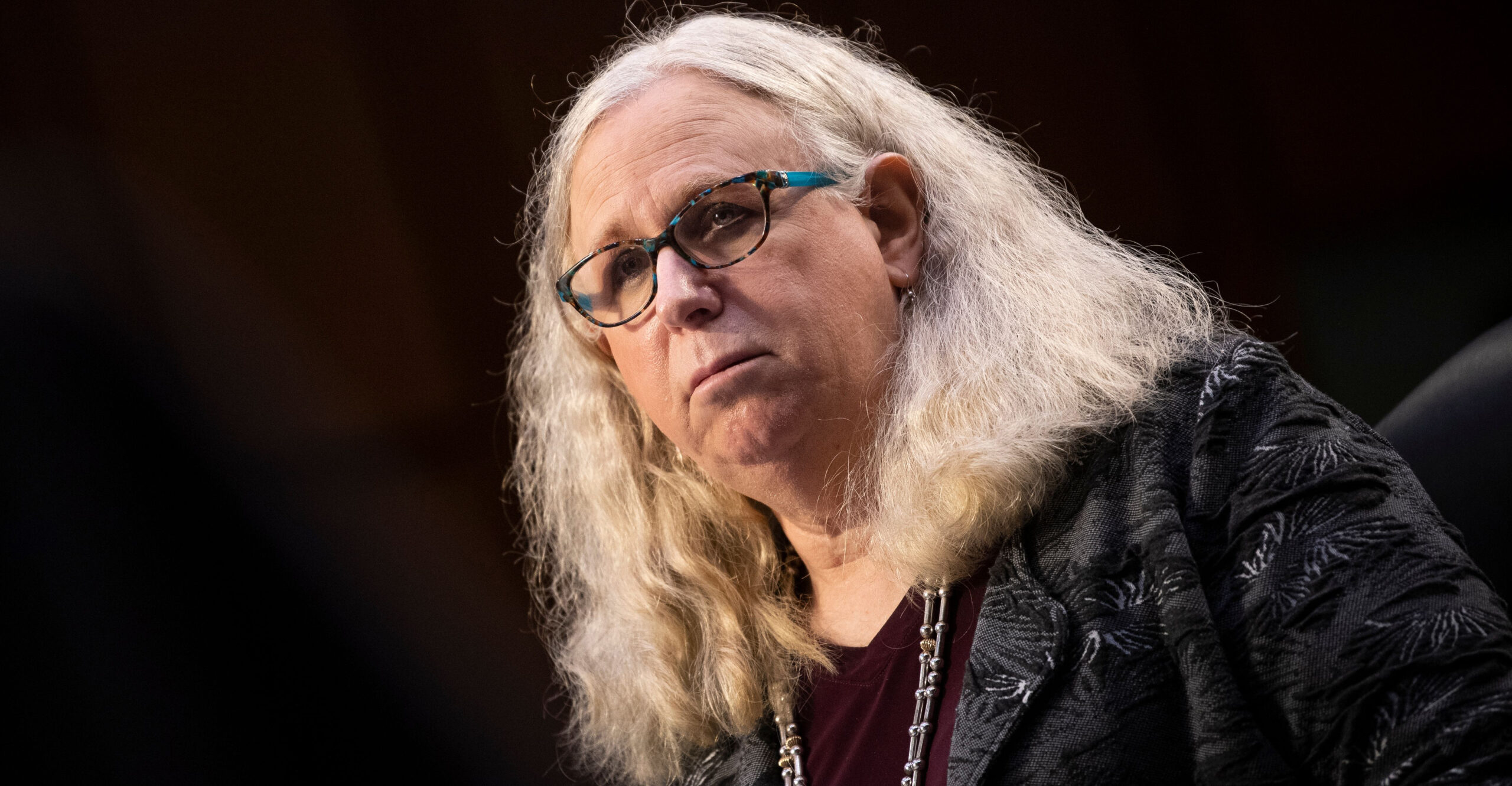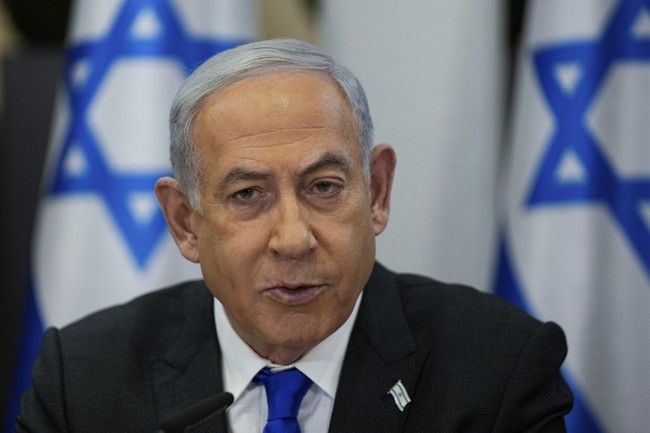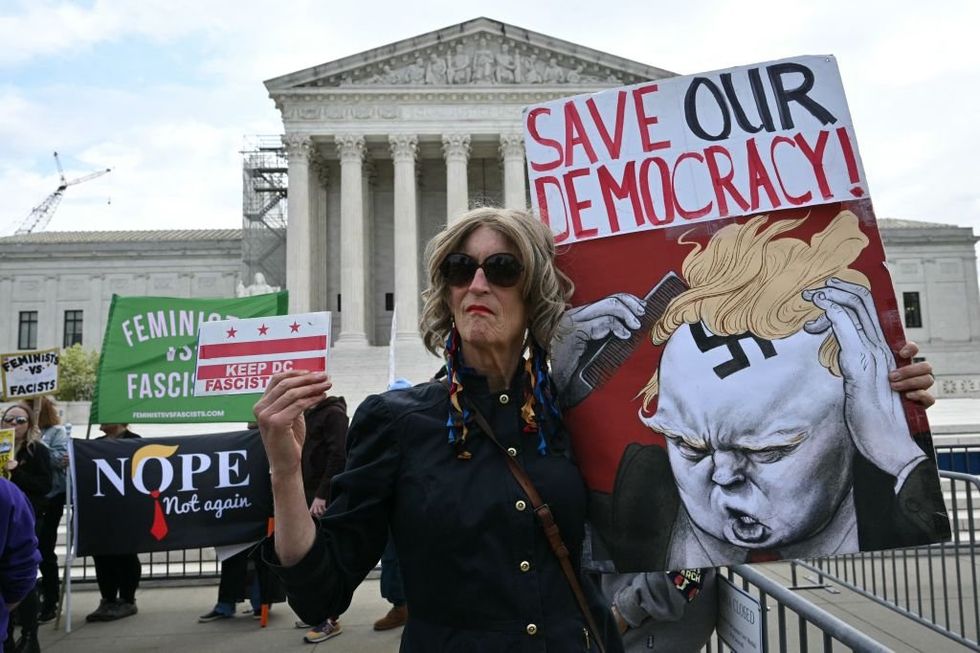
www.dailysignal.com
EXCLUSIVE: Top Pediatrician Promoting Trans Procedures for Texas Kids Now High Ranking NIH Official
FIRST ON THE DAILY SIGNAL—The chief pediatrician at Texas Children’s Hospital resigned in April 2022 after just seven months in her role, shortly after Gov. Greg Abbott forced the hospital to pause attempted sex-change procedures on children, such as puberty blockers, hormones, and surgeries.
Now she’s working for President Joe Biden’s administration in a high-ranking position at the National Institutes of Health as Biden’s Justice Department targets whistleblowers exposing alleged ongoing transgender practices at Texas Children’s.
Texas Children’s claimed that Catherine Gordon’s departure had nothing to do with the article she authored (pre-published in March 2022 by the American Academy of Pediatrics, ahead of its June issue) arguing that puberty blockers are “invaluable” for kids who identify as transgender and that Texas should leave the gender debate up to “physicians, patients, and their families.” That article noted that she was funded by NIH.
“We thank Dr. Gordon for her many contributions to Texas Children’s Hospital and our patients, and we wish her all the best in her next endeavors,” the hospital told The Dallas Morning News at the time, claiming it “fully supports” Gordon’s article. “We remain deeply committed to our transgender and gender-diverse patients.”
Gordon, who declined to comment for this report, ascended in September 2023 to a high-ranking position within the Department of Health and Human Services (HHS), where she now serves as clinical director for the National Institute of Child Health and Human Development (NICHD).
This appointment came after conversations with trans-identifying Rachel Levine, the biologically male assistant secretary at HHS who identifies as a woman, according to emails obtained by America First Legal (AFL) through litigation against HHS.
AFL believes that the emails illustrate “the Biden administration’s conscious decision to continue pushing the harmful practice of child transgender surgeries and to assist in stepping up HHS Office for Civil Rights (OCR) investigations in Texas following the state’s ban of such medical treatments on children in March 2022.”
“While the rest of the world is pulling back on the inhumane practice of child experimentation, the Biden administration is plowing full steam ahead, and the Department of ‘Health and Human Services’ is leading the way,” America First Legal senior adviser Ian Prior told The Daily Signal.
“Whether it’s putting transgender-activist doctors in high-ranking positions in the National Institute of Health or prosecuting doctors who blow the whistle on these barbaric medical treatments, the Biden administration is weaponizing the federal government to destroy any dissent or challenge to child mutilation and sterilization,” he added. “America First Legal is committed to ending these practices and ensuring that history remembers those who perpetrated these crimes against humanity.“
Levine’s office has said that “early” transgender surgeries, hormone treatment, and affirmations are “crucial” for the health of kids and teens who identify as transgender, arguing that if these procedures are not made available to trans-identifying youth, they are at risk of self-harm or suicide.
Research has found that, contrary to those activists’ claims, so-called gender-affirming care increases the likelihood that youth will attempt suicide. According to one April study, “Gender-affirming surgery is significantly associated with elevated suicide-attempt risks, underlining the necessity for comprehensive post-procedure psychiatric support.”
Gender affirming care for transgender youth is essential and can be life-saving. These actions perpetuate the spirit of intolerance and discrimination against transgender youth, it is unconscionable that evidence-based care is being politicized. https://t.co/rODnS8fiFj— ADM Rachel Levine (@HHS_ASH) February 24, 2022
The emails show that Gordon and Levine began chatting in the months following Gordon’s departure from Texas Children’s.
In July 2022, according to the emails obtained by AFL, Gordon reached out to Levine to virtually introduce the HHS assistant secretary to Dr. Priya Verghese, the division chief of nephrology at Lurie Children’s Hospital and Northwestern University Feinberg School of Medicine in Chicago, who Gordon described as an “advocate for transgender youth.”
After some back and forth about a conference that Verghese was planning, Levine and Gordon set up a call to chat.
“Thank you for the good conversation today, Rachel, and for your incredible support,” Gordon emailed Levine on Aug. 10, 2022. “Was wonderful to have the opportunity to catch up with you. I will keep you posted on the next steps.”
“Please take care and keep me up to date,” Levine responded, signing the email, “Your friend, Rachel.”
About a month later, Gordon was appointed the clinical director of the Eunice Kennedy Shriver National Institute of Child Health and Human Development.
Gordon’s biographical materials on the NIH website do not mention that she formerly worked as a pediatrician at Texas Children’s Hospital—though her biography does acknowledge that she has “training in both adolescent medicine and pediatric endocrinology with research experience in adolescent bone health, including identifying modifiable factors during adolescence that influence bone density and other aspects of health during the adult years.”
The NIH’s publication, The Catalyst, also made no mention of Gordon’s time at Texas Children’s Hospital in its write-up of her new role. It did, however, emphasize that “Gordon has been on a mission to raise awareness about bone health during those critical developmental years,” and notes that she “brings to the NIH her own lab that has focused on discovering modifiable factors in childhood and adolescence that optimize bone development.”
“At the NIH, another focus for Gordon will be developing tools that can be used to noninvasively, safely, and quickly evaluate the skeletal health of children and adolescents,” the article continues. “To that end, NICHD has purchased a high-resolution peripheral quantitative computed-tomography scanner that enables bone density and skeletal strength assessments of the peripheral skeleton.”
The repeated references to Gordon’s work on bone development are interesting given that Gordon had authored an October 2021 article arguing that puberty blockers for kids are “life-saving” interventions, even though she acknowledged more research on this experimental and controversial process is needed.
Repeatedly, throughout her work, she has stressed the idea that the negative effects of puberty blockers on bone density need to be balanced with (false) activist-based claims that kids who identify as transgender will kill themselves if they do not get access to puberty blockers, hormones, or surgeries.
“In the forefront of our thinking was the known high risk of suicide in transgender individuals, including both youth and adults,” she wrote in her piece published in the American Academy of Pediatrics 2022 issue.
“Puberty blockers represent an invaluable intervention for these children and adolescents, to reduce anxiety and ‘buy time’ until final decisions can be made about gender assignment,” she wrote in that same article, adding in another section that, “Early in [her] career, [she] saw how pubertal blockade and eventual gender-affirming therapy represented a life-changing, and for some, life- saving treatment of these children and adolescents.”
Gordon is not the only HHS official to downplay concerns about the effects of such procedures on children. In late June, The New York Times reported that HHS pressured the World Professional Association for Transgender Health (WPATH)—a transgender activist group—to drop age limits for interventions that leave people stunted, scarred, and infertile.
The Times reported on a conversation that a WPATH official described having with Levine’s chief of staff, Sarah Boateng.
“She is confident, based on the rhetoric she is hearing in D.C., and from what we have already seen, that these specific listings of ages, under 18, will result in devastating legislation for trans care,” the WPATH member wrote of Boateng, according to The New York Times. “She wonders if the specific ages can be taken out.”
Another email said Levine “was very concerned that having ages (mainly for surgery) will affect access to care for trans youth and maybe adults, too. Apparently, the situation in the U.S.A. is terrible, and she [meaning Levine] and the Biden administration worried that having ages in the document will make matters worse. She asked us to remove them.”
Texas Children’s has also drawn increasing attention in recent weeks as the DOJ targets a whistleblower who exposed the hospital allegedly secretly performing attempted gender-transition procedures on children.
The U.S. Attorney’s Office for the Southern District of Texas announced in mid-June that it had indicted 34-year-old Eithan Haim for “obtaining protected individual health information for patients that were not under his care and without authorization.” If convicted, he faces up to 10 years in prison and a $250,000 maximum possible fine.
Texas Children’s had publicly said in March 2022 that it would no longer perform attempted gender-transition procedures on kids. In May 2023, Haim provided journalist Christopher Rufo with documents showing that Texas Children’s was “lying to the public about the existence of its transgender-medicine program,” as Haim later revealed in an explosive piece in January of this year.
“I worked at the hospital as a surgery resident, and I knew that these interventions didn’t stop,” Haim wrote. “Three days after the announcement, a surgeon implanted a hormone device in a healthy 11-year-old girl for gender dysphoria. Over the next year, the frequency of these procedures increased, and potentially hundreds more children received hormone interventions for gender dysphoria.”
I blew the whistle on @TexasChildrens secret sex change program and the @TheJusticeDept came after me for exposing the truth. After experiencing DOJ corruption we've decided to fight back. If you want to join the fight, donate below. https://t.co/ZMhL9LG3o1— Eithan Haim MD (@EithanHaim) March 10, 2024
“Meantime, the director of a program that supposedly no longer existed was given the opportunity to speak at the hospital’s most prestigious lecture series in January 2023,” he continued. “I knew that it was my moral responsibility to expose what was happening to these children.”
Haim told The Free Press that before he gave Rufo any of the documents, he made sure that the patients’ names and identifying information were redacted (to protect himself from violating federal laws and to protect the patients’ privacy).
The very next day after Rufo published Haim’s (then anonymous) May 2023 expose, the Texas Legislature banned these experimental gender-transition attempts for minors.
A month later, two federal agents came to Haim’s home to speak with him. They told him that he was a “potential target” of an investigation into federal criminal violations related to medical records.
“It was clear to me that this was a political investigation. I refused to submit to an interview without an attorney,” he wrote in City Journal.
After that, Haim went public with his story.
“To these agents, the prosecutor, and their political handlers, I was a criminal because I had told the truth,” he wrote. “It didn’t matter that we exposed the fact that the largest children’s hospital in the world was lying to the public about the existence of a program in which children were manipulated, mutilated, and even sterilized. It didn’t matter that the practice that they were lying about had now become illegal. It didn’t matter that I had committed no crime.”
“None of this mattered, I believe, because I had exposed a truth that threatened their ideology,” Haim added. “This was the reason for their frightening show of force. The intent was to intimidate me. If I agreed to stay silent, though, I would be legitimizing their lies and sacrificing the truth. Instead, I decided to fight back.”
The Daily Signal’s Hudson Crozier reported earlier this week on an official video of an HHS committee meeting in July 2023 showing Melanie Fontes Rainer, director of the HHS Office for Civil Rights, encouraging a crackdown on whistleblowers whose leaks were “in the news” at the time.
HHS Urged Crackdown on 'So-Called' Whistleblowers Exposing Gender Medicine, Video RevealsVia Hudson Crozier:https://t.co/o0yzeHmRyt— The Daily Signal (@DailySignal) July 10, 2024
“We are seeing instances in some of these states where gender-affirming care is being banned where … somebody that works in a facility is taking it upon themselves to disclose information, whether it’s to a state attorney general or a news publication, using this, sort of, so-called whistleblower hat<<CQ? sic?>> under state law,” Rainer told the HHS advisory committee.
Rainer further said that these situations make it “really important on the front end to have all the security and privacy controls, who has access to the data, why do they have access to the data … that’s what we can regulate.”
She added that “reeducating [health care] providers is really important right now” because “these are … things that people did not anticipate having to talk about with staff or trying to face, and I think we’re seeing it more and more.”
Tyler O’Neill and Hudson Crozier contributed to this report.
The post EXCLUSIVE: Top Pediatrician Promoting Trans Procedures for Texas Kids Now High Ranking NIH Official appeared first on The Daily Signal.

















